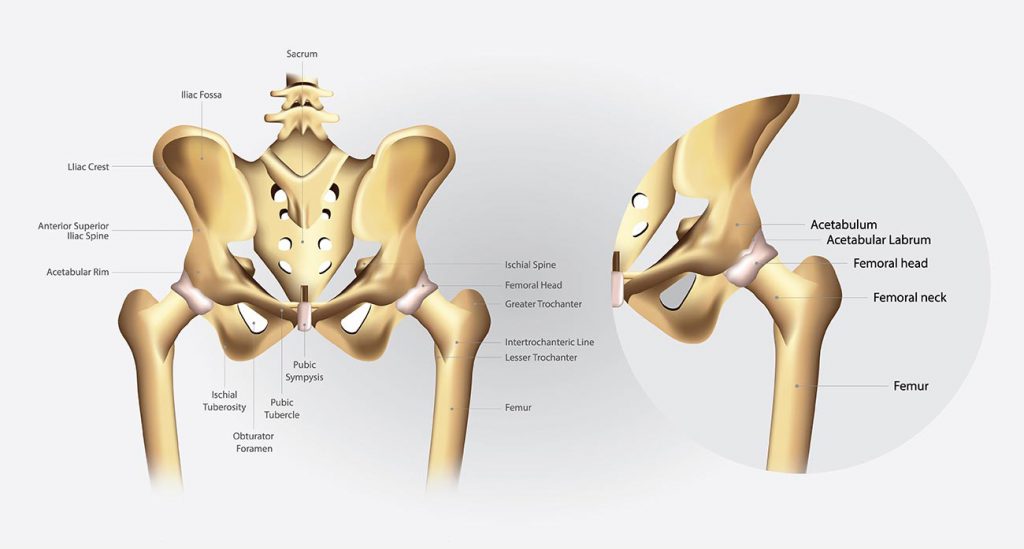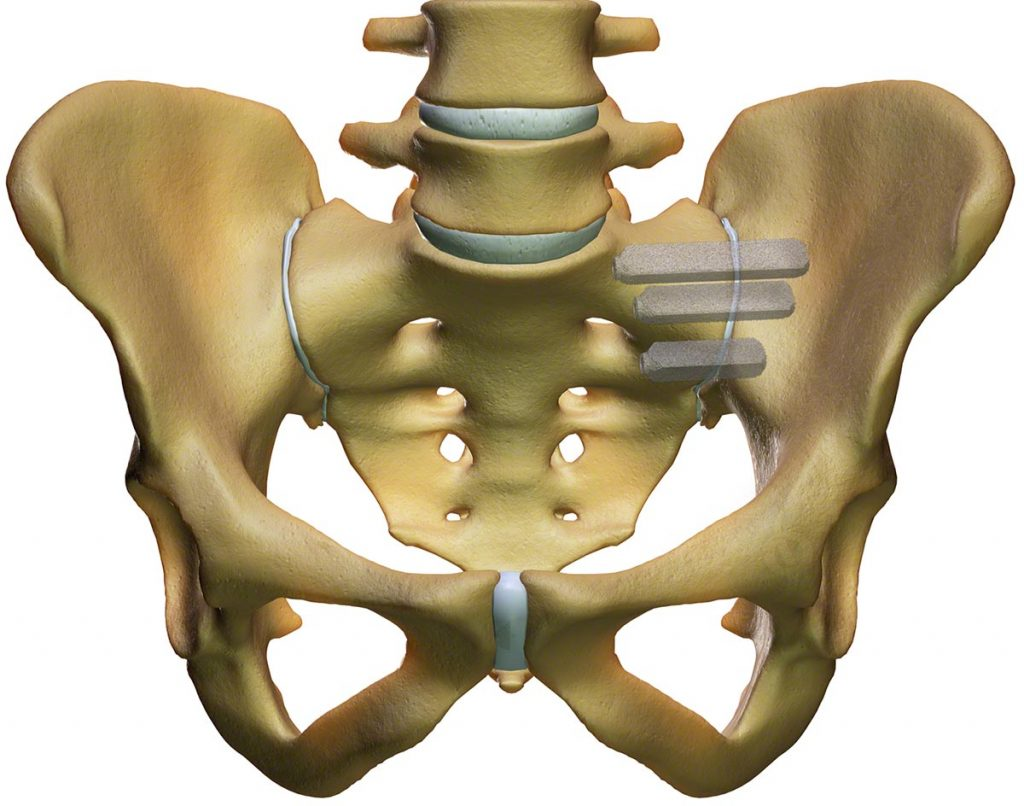
- What is the Sacroiliac Joint?
- Causes of SI Joint Pain
- Treatments for Sacroiliac Joint Dysfunction
- Minimally Invasive SI Joint Fusion Has High Success Rate
A frequent cause of lower back pain is due to issues with the sacroiliac (SI) joint. The SI joint is estimated to be the cause of 15-30 percent of people experiencing lower back pain. Some estimates say the SI joint accounts for an even higher percentage, with 38 percent of lower back pain being due to SI joint dysfunction.
With such a high incidence of sacroiliac joint pain, medical researchers continually develop minimally invasive procedures using advanced technologies. A recent development is the SiLO procedure that uses a joint fixation system for an SI fusion to relieve pain.
What is the Sacroiliac Joint?
For a review, the sacroiliac joint is located where the hip bone (ilium) and sacrum are connected. The sacrum is a wide bony structure shaped like a “V” or shield located at the bottom of the lumbar spine. If you look at a picture of the hip bones, you will see two ilium bones separated by the sacrum in the back of the pelvic girdle. A sacroiliac joint is created where each iliac bone connects to the sacrum. There are two sacroiliac joints, one on each side of the sacrum.
The SI joints are designed to absorb impact from lifting and walking, supported by muscles and ligaments. SI pain is pain experienced when the sacroiliac joint deteriorates for some reason or experiences dysfunction, limiting movement.

Causes of SI Joint Pain
Lower back pain can easily be mistaken for other causes than SI joint dysfunction or deterioration, like sciatica. SI joint pain is also called SI joint inflammation and SI joint strain. The pain usually occurs on one side but can develop in both joints. The causes of SI joint pain include the following.
- Inflammation in the sacroiliac joint
- Trauma, like a vehicle accident or fall
- Ligament injury or excessive stretching
- SI joint degeneration due to arthritis or normal wear-and-tear
- Uneven pelvic movement due to a musculoskeletal issue
- Diseases like a systemic autoimmune disease such as axial spondylarthritis causing swelling and pain or an inflammatory disease like sacroiliitis
- Pregnancy or childbirth stretches ligaments and applies excessive pressure on the joints
Sacroiliac joint pain can be debilitating because it makes any movement difficult, including walking, sitting, twisting and lifting. Finding sacroiliac joint pain relief becomes a quality-of-life issue.
Treatments for Sacroiliac Joint Dysfunction
The most common ways to determine if the sacroiliac joint is causing lower back pain is to inject an anesthetic to see if the pain is numbed and to take x-rays or a scan. If the SI joint is causing pain, the next step is determining the best treatment. Nonsurgical treatments are tried first, like taking anti-inflammatory medications, physical therapy or injection of a corticosteroid into the joint. Surgery has been the usual next step if these treatments do not work.
One of the minimally invasive options is an SI joint fusion. Current technology includes inserting titanium implants that connect the sacrum and iliac bone. The implants create joint stability and restore some of the capacity to bear weight.

A different type of SI joint fixation involves the placement of a cortical bone graft in the joint where the bones grow together. Thanks to the development of advanced technologies, new non-invasive options are available, like the SiLOTM joint fusion procedure. This procedure involves the following basic maneuvers.
- Making a small incision to insert a joint finder
- Advancing the SiLOTM GhostTube, which enables visualizing the SI joint
- Using a decorticator that produces a bone surface that stimulates bone growth
- Placing biologics into the joint
- Placing a SiLOTM Graft Implant) made of human cortical bone into the joint
- Adding additional biologics
The implant’s three ridged vertical side channels hold the bone graft in place during fusion, and two vertical side channels can accommodate additional bone graft material. The FDA recently approved a newer version of the SiLOTM joint fusion system called the SiLO TFX™ MIS Sacroiliac Joint Fixation System. Patients with SI joint deterioration or disruption may find pain relief through this system. It transfixes (holds in place) the ilium and sacrum while the bones fuse.
Minimally Invasive SI Joint Fusion Has High Success Rate
SI joint fusion procedures have been very successful, with more than 80 percent of patients experiencing the reduction or elimination of pain. SI joint pain relief enables people to enjoy their work and normal daily activities. The new technologies providing state-of-the-art treatment for SI joint dysfunction or deterioration give people a new lease on life. Discuss the treatment options with your pain doctor because there is likely a pain-relieving option that will work for you.
Sources
- https://www.ncbi.nlm.nih.gov/pmc/articles/PMC8253473/
- https://www.dovepress.com/a-review-and-algorithm-in-the-diagnosis-and-treatment-of-sacroiliac-jo-peer-reviewed-fulltext-article-JPR
- https://www.ncbi.nlm.nih.gov/pmc/articles/PMC8176825/
